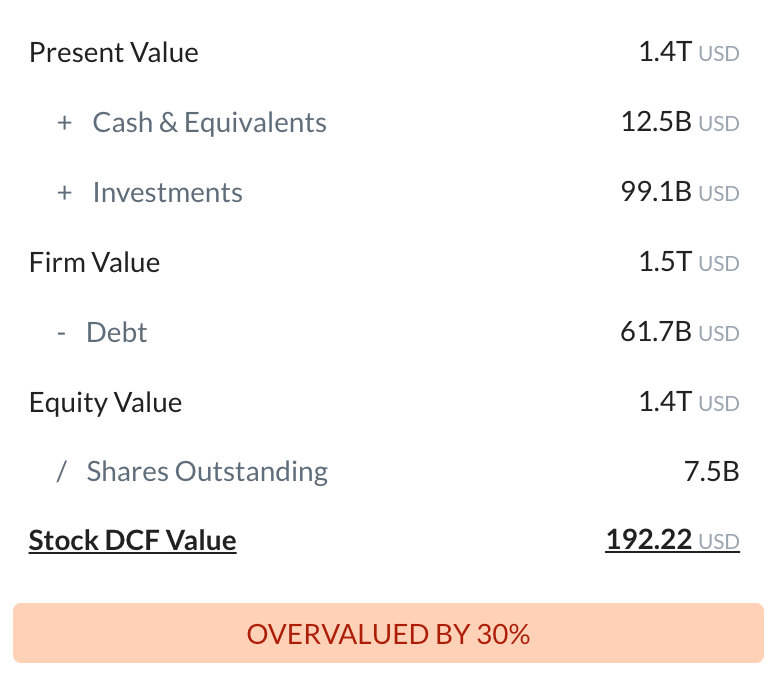
Amazon.com Inc
NASDAQ:AMZN

Intrinsic Value
The intrinsic value of one
 AMZN
stock under the Base Case scenario is
141.55
USD.
Compared to the current market price of 167.32 USD,
Amazon.com Inc
is
Overvalued by 15%.
AMZN
stock under the Base Case scenario is
141.55
USD.
Compared to the current market price of 167.32 USD,
Amazon.com Inc
is
Overvalued by 15%.
The Intrinsic Value is calculated as the average of DCF and Relative values:

Valuation History
Amazon.com Inc

Fundamental Analysis

A slowdown in AWS revenue growth combined with persistently thin margins in the retail segment may suppress overall profitability, undermining Amazon’s ability to fund strategic ventures.
Amazon Web Services continues to be a high-margin, market-leading cloud platform, providing a crucial profit engine that funds reinvestment across the entire organization.

Revenue & Expenses Breakdown
Amazon.com Inc

Balance Sheet Decomposition
Amazon.com Inc

| Current Assets | 190.9B |
| Cash & Short-Term Investments | 101.2B |
| Receivables | 48.9B |
| Other Current Assets | 40.8B |
| Non-Current Assets | 434B |
| Long-Term Investments | 4.6B |
| PP&E | 328.8B |
| Intangibles | 23.1B |
| Other Non-Current Assets | 77.5B |
Free Cash Flow Analysis
Amazon.com Inc

| USD | |
| Free Cash Flow | USD |
Earnings Waterfall
Amazon.com Inc

|
Revenue
|
638B
USD
|
|
Cost of Revenue
|
-326.3B
USD
|
|
Gross Profit
|
311.7B
USD
|
|
Operating Expenses
|
-243.1B
USD
|
|
Operating Income
|
68.6B
USD
|
|
Other Expenses
|
-9.3B
USD
|
|
Net Income
|
59.2B
USD
|
AMZN Profitability Score
Profitability Due Diligence

Amazon.com Inc's profitability score is 56/100. The higher the profitability score, the more profitable the company is.

Score
Amazon.com Inc's profitability score is 56/100. The higher the profitability score, the more profitable the company is.
AMZN Solvency Score
Solvency Due Diligence

Amazon.com Inc's solvency score is 81/100. The higher the solvency score, the more solvent the company is.

Score
Amazon.com Inc's solvency score is 81/100. The higher the solvency score, the more solvent the company is.
Wall St
Price Targets
AMZN Price Targets Summary
Amazon.com Inc

According to Wall Street analysts, the average 1-year price target for
 AMZN
is 270.08 USD
with a low forecast of 181.8 USD and a high forecast of 321.3 USD.
AMZN
is 270.08 USD
with a low forecast of 181.8 USD and a high forecast of 321.3 USD.
Dividends

Current shareholder yield for  AMZN is
.
AMZN is
.
Shareholder yield represents the total return a company provides to its shareholders, calculated as the sum of dividend yield, buyback yield, and debt paydown yield. What is shareholder yield?

The intrinsic value of one
 AMZN
stock under the Base Case scenario is
141.55
USD.
AMZN
stock under the Base Case scenario is
141.55
USD.
Compared to the current market price of 167.32 USD,
 Amazon.com Inc
is
Overvalued by 15%.
Amazon.com Inc
is
Overvalued by 15%.






















































 You don't have any saved screeners yet
You don't have any saved screeners yet